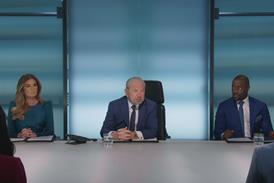More key takeaways from the broadcaster’s response to the government privatisation probe

The DCMS’ consultation into the privatisation of Channel 4 closed yesterday and, in a last-ditch attempt to fend off a sale, C4’s own submission said privatisation could cause “irreversible” harm to audiences and the economy.
Broadcast dove into the document to discover what you might have missed, with C4 focusing on cultural impact, digital and its PSB remit, while calling out the DCMS’ process.
Cultural impact
“Moving C4 into private ownership will inevitably and fundamentally alter the incentives and culture of the organisation and this will have inevitable knock-on effects on how C4 delivers its remit.
Cost cutting could occur across key areas that are currently not revenue generating – for example a reduction in public service genres, in risky areas such as Film4, and in initiatives such as 4Skills and our regional investment plans.
We are concerned that moving C4 into private ownership could also result in a reduced diversity and quality of content for UK viewers. Despite the multiplicity of channels and streaming options available, viewers come to C4 because we do things in a fundamentally different way to global streamers, US based multinationals, and indeed our fellow UK PSBs.”
Calling out the DCMS’ process
“This proposal was not in the government’s manifesto at the last general election, and a nationally representative audience survey of 2000 people conducted by Tapestry in July 2021 found little support for privatisation. Once C4’s model was explained to the sample, 82% of UK adults aged 18–75 said that C4 should remain publicly owned. Broken down in further detail, this included 75% of Conservative voters and 75% of people in Scotland.
The consultation document does not include an impact assessment. We would stress to government our view of the importance of publishing a full, transparent impact assessment ahead of any decision so that the public and all stakeholders are able to fully understand and consider the impact of changing C4’s ownership structure.
The ideal process for considering a potential change of ownership of C4 would be to first begin with a comprehensive discussion around exactly what goals the government, parliament and the British people want C4, and indeed the wider PSB ecosystem, to deliver for the next 40 years
Depending on the outcome of that process the government could then consider what ownership and model for C4 would be best placed to deliver this new set of goals.”
Updating the remit
“Given the changing nature of consumer habits and the need to reach British young people with trusted, accurate content from this country, the remit could be updated to make clear the central importance of C4’s role in serving young audiences.
We believe that C4’s remit, and subsequent licence obligations, should be updated to account for both linear and digital provision. The current quotas do not incentivise C4 to invest in its digital platforms, but instead requires us to focus our investment on the main linear TV channel.
While some updates to the remit are possible under private ownership, C4 is of the view that a sale to a private owner is unlikely to be the most effective model for maximum remit delivery.”
‘Drag anchor’ to digital switch
“The market challenges apply to all commercially funded broadcasters, regardless of ownership status. Therefore, the challenges are not directly linked to public ownership.
A change of ownership could act as a drag anchor on C4’s digital transition – the disruption associated with change of ownership would inevitably slow down our rate of change; and there is a risk that the government may choose to combine C4 with a larger, less agile organisation that is less able to respond rapidly to market developments.”
































No comments yet